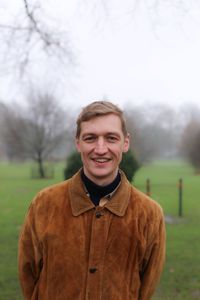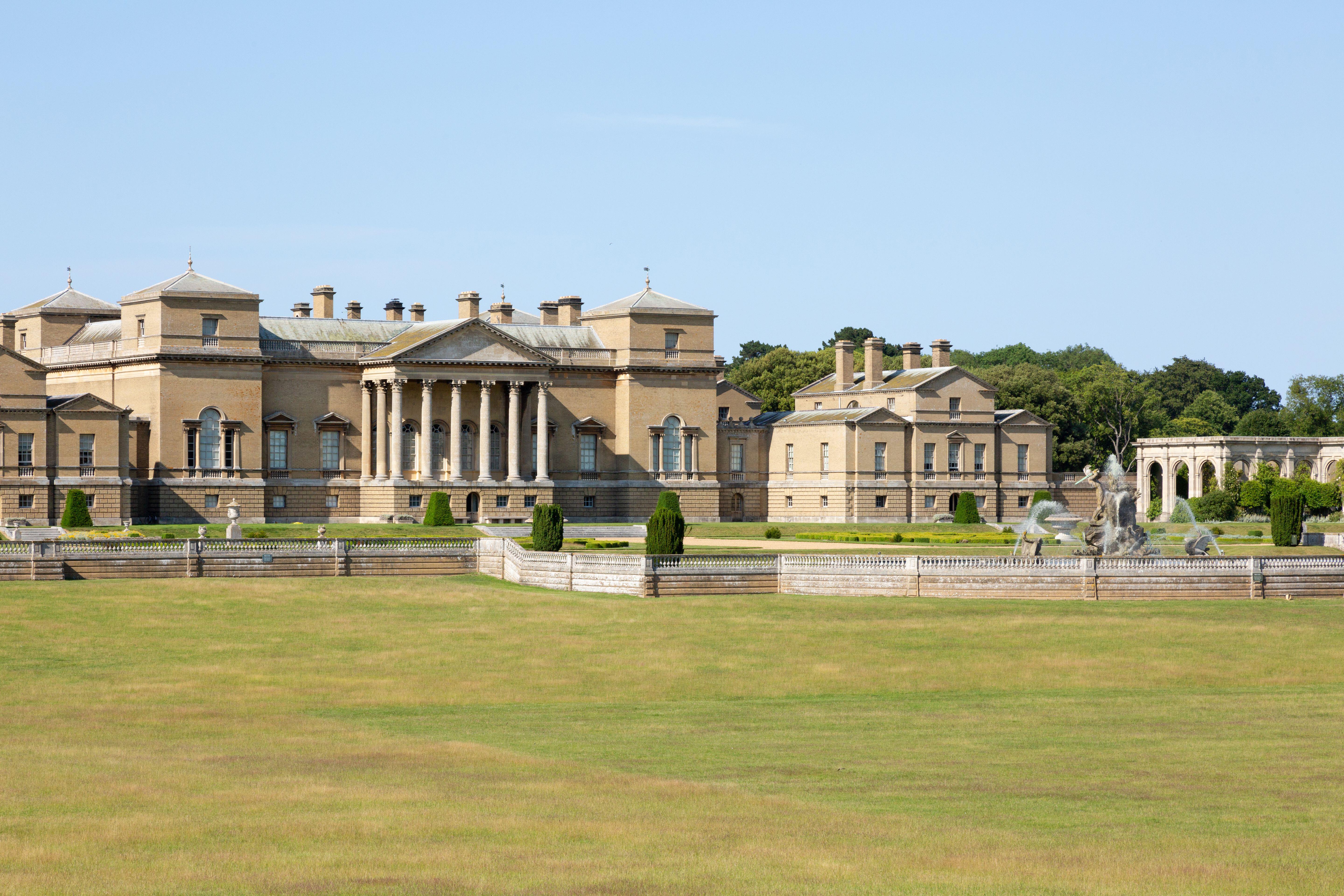Exploring the countryside is essential for our wellbeing, but Right to Roam is going backwards
Campaigners in England often point to Scotland as an example of how brilliantly Right to Roam works, but it's not all it's cracked up to be, says Patrick Galbraith.


My happiest childhood memories are of trespassing and poaching. At school, I kept a fishing rod in my locker and, whenever the opportunity arose, I would disappear off to cast a worm for a salmon. During the holidays, I’d be out with my terrier trying to catch rabbits.
I have long been aware that being able to explore the countryside is essential for our wellbeing. In some ways, it’s part of British identity. This was my inspiration for writing Uncommon Ground: Rethinking our relationship with the countryside. From fox-hunting to fell running, this is our green and pleasant land—but what impact does footfall have on the countryside and, therefore, on farming and conservation? As a species, humans are flourishing, whereas birds such as the curlew are fast crying their way towards extinction. Their decline is a consequence of our success.
On a bright January day in 2023, the largest land-access demonstration since the 1930s was held on Dartmoor, with some 3,000 people protesting against wild camping being officially banned on the moor (many landowners have long tacitly allowed it) after legal action brought by landowner Alexander Darwall. His contention was that people, en masse, are harmful to wildlife and cause trouble for farmers. The Right to Roam campaign, by contrast, wants to camp without permission. ‘The stars are for everyone’, the campaign slogan runs.
That march — and I was there — was triggered by the camping ban, but it was about more than that. The Right to Roam campaign complains that the public can only access 8% of the countryside and there is a narrative that large estates are no-go zones. With reference to the Englefield estate in Berkshire, for instance, Right to Roam organisers claim that ‘but for a few stunted footpaths that trace along some field margins, the rivers, lakes, woodland, and meadows of [Richard, Baron Benyon’s] vast domain remain shut, at all times’.

The Englefield estate in Berkshire has been a matter of contention among Right to Roam organisers.
This is compelling, yet categorically false: 1,700 acres of Englefield are accessible and I had an amusing day there talking to visitors, one from Ghana, another from Tennessee in the US. They were amazed at how good the access is in England. ‘If there was anything like this in Ghana,’ said the former, ‘it would be private and we wouldn’t be able to access it.’
The 8% figure is important to contextualise. It refers to the extent of designated ‘access land’ as defined in the Countryside and Rights of Way Act, which includes moorland and registered ‘common land’. It isn’t, as is often claimed, the entirety of accessible land in England. Take Holkham estate in Norfolk, where roughly 20% of the 25,000 acres can be enjoyed, including 3,000 acres of parkland. Clearly, this is a lot of space, but it wouldn’t fall within that 8%. As so often, the truth behind the rabble-rousing statistics isn’t what the rabble-rousers would have you believe.

3,000 acres of parkland at Holkham Hall and estate are open to be enjoyed.
Part of the inspiration for my book was to talk to those affected by access, from whom we don’t often hear — such as farmers, conservationists and gamekeepers. I was shocked to learn from Cameron Farquharson, a farmer in Dorset whose grazing land is open to the public, that he often loses 10% of his sheep to wayward dogs in a year. His worst-ever day was when 11 pregnant ewes were killed. Impressively, Mr Farquharson has responded by providing farm tours — he believes that the best line of defence is education.
Exquisite houses, the beauty of Nature, and how to get the most from your life, straight to your inbox.
Livestock worrying is the most obvious impact on agriculture, although there is much more at play. Pig farmers, for example, worry about biosecurity. If a discarded ham sandwich contaminated with African swine fever ends up being eaten by pigs, it could result in the disease tearing through Britain’s pig population, which would mean the sector locking down. Unable to sell their animals, pig-farming businesses — which are often marginal — would go bang.
Ed Barker, head of policy at the Agricultural Industries Confederation, explains that part of the issue is modern living. In an increasingly globalised world, people bring all sorts of ‘zoonotic nasties’ back with them from holidays abroad. He also fears that the rise of the staycation has the potential to be problematic. Staying at a farm B&B with a bovine TB problem in Devon one weekend and then hiking in the Lakes the next could be a disaster. Contamination on your boots could literally ruin a farm business.
As well as posing a problem for farmers, access can be an issue for conservation. One curious thing about humans is the determination to venture into the habitats of other creatures. Seals seldom flop onto our sofas, but we feel it’s our right to enjoy their coastal homes. At the seal hospital in Hunstanton, Norfolk, I met pups that had been abandoned by their mothers because of human disturbance. Sophie Negus, the hospital’s curator, even recounted a recent incident in which a man put his toddler on a seal’s back, as if they were riding it, for a photograph.

Blakeney Point in Norfolk is popular among seals. And walkers.
We are sometimes told the public doesn’t appreciate wildlife because they don’t get to see it. Yet we can see seals and that suggestion didn’t land particularly well with a Pennines gamekeeper who continually has his black grouse disturbed by birdwatchers.
There is a fundamental point that must be considered and that is that, in the year 1500, the population of Britain was 2.5 million. It’s now 30 times that and rising — it simply wouldn’t work to have unfettered access to the countryside. Campaigners in England often point to Scotland as an example of how brilliantly Right to Roam works. Yet the powers that be have had to impose no-camping zones in the Central Belt and farmers there spend a lot of time tidying up after campers.
What is clear is that a lot of harm caused by the public is due to a lack of knowledge. At one point, a co-leader of Right to Roam, Lewis Winks, was calling for access to field margins. Conservationists hit back by saying that these margins are vital refuges for wildlife and one of Mr Winks’s campaign colleagues admitted to me that they had got it wrong.
How is it that we have activists calling for nonsensical things? I would say it’s because they’ve been let down. If a farmer or landowner tells me the public doesn’t understand the countryside, I reply: ‘You’re probably right — but what have you done to change that?’ Now, more than ever, British farming needs to be telling its story and conservation-minded farmers should be required to facilitate educational visits in order to receive subsidy payments. Children should know exactly why field margins shouldn’t be thrown open. It’s about opportunities to understand the countryside, rather than wandering blindly across it.
In England and Wales, we have 140,000 miles of rights of way. If you joined them up and walked from one end to the other, it would be the equivalent of circling the globe six times. We do not lack access, but we do lack a culture that recognises the importance of the country-side as a place that supports life beyond the human and appreciates farming. One man’s playground is another man’s office.
‘Uncommon Ground: Rethinking our relationship with the countryside’ by Patrick Galbraith is out on April 24 (HarperCollins, £22)
Patrick Galbraith is an author, journalist, former editor of Shooting Times, and a regular contributor to Country Life.
